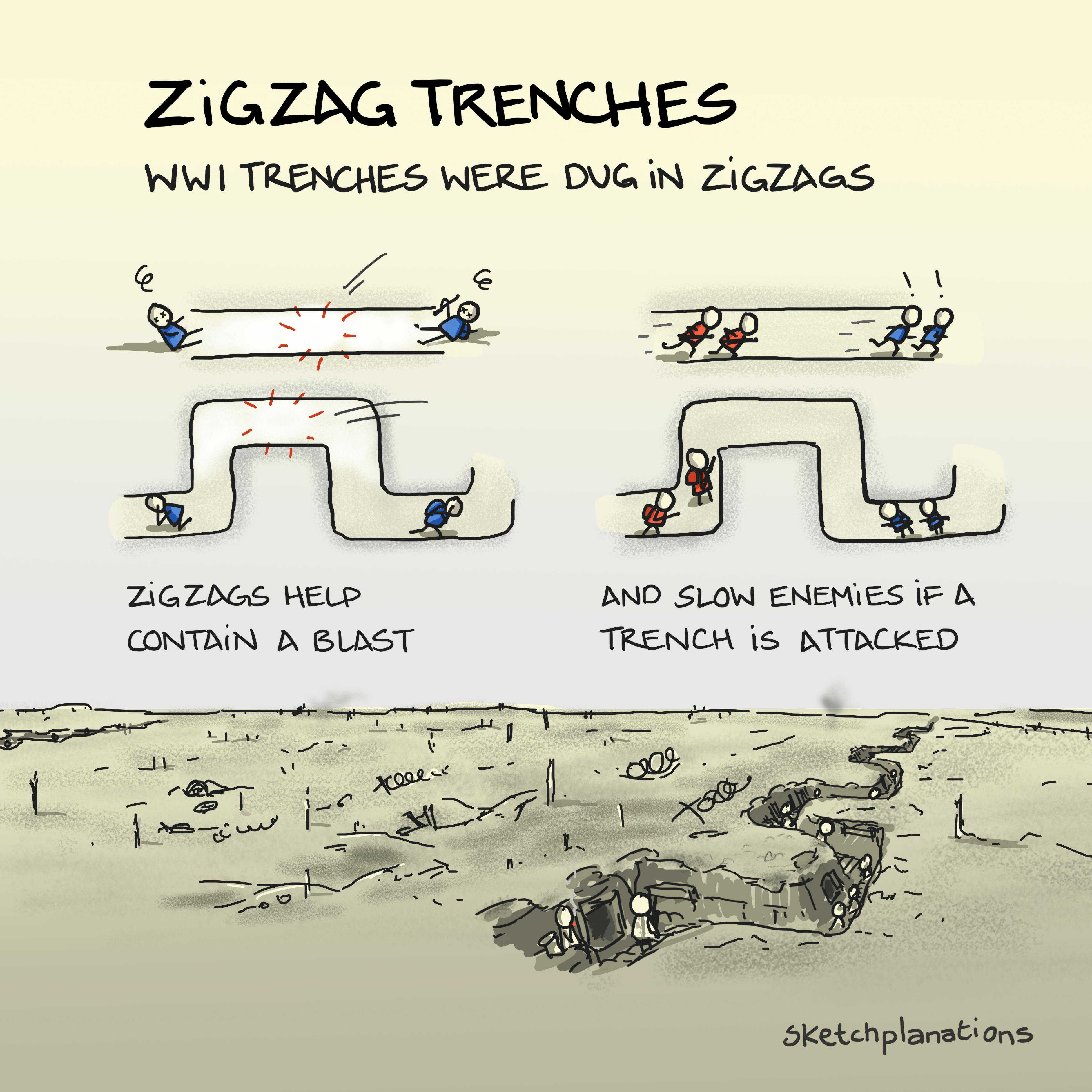Zigzag trenches

- Prints
- Copied!
👇 Get new sketches each week
Trench warfare dominated the fighting in WW1. After the initial hasty digging of trenches in the early days of the war, as each side dug in to defend their lines, trenches evolved to be more complex and sophisticated, including digging them in a stepped or zigzag shape.
Why were trenches dug in a zigzag pattern? Zigzagging trenches with sharp corners helped remedy several fatal flaws learned from early trench warfare:
1. Zigzags help contain blasts
One of the key advantages of a zigzag trench is its ability to contain blasts. In a straight trench, the blast from mortar or artillery fire would travel unimpeded to either side. However, a trench with frequent bends could confine explosions to smaller portions of the trench, reducing casualties.
2. Zigzags help slow an enemy down after capturing a trench
A straight trench meant that breaching a portion of it gave a long line of sight and the ability to fire down the trench which could aid attackers. Angles and corners from the zigzag or wavy shape of a trench meant that line of sight was reduced and gave better defensive positions with cover and concealment.
So, the simple change from a straight trench to a zigzag gave defenders significant advantages, and both sides used the design during the war. It's painful to imagine the tragic lessons that led to this evolution in design.
I learned about zigzag trench design from a children's book about WW1: 50 Things You Should Know About The First World War, by Jim Eldridge . It's striking how such a simple design change can have a significant effect. It's also a great example of how a simple solution can seem so obvious in retrospect and yet may take time to develop.
One of the trends of evolution identified in the theory of inventive problem solving that always fascinated me and has myriad applications is how straight lines in products typically evolve to jointed or bent, then wavy lines. As the theory would say, a straight line has unused potential, and someone will find an advantage in introducing a bend or bends. I sketched a similar trend about flat surfaces having unused potential.
The Imperial War Museum has a great 9-minute video explaining trench warfare , which discusses the zigzag or stepped design in this sketch.
Also see:
- VUCA
- OODA Loop
- Survivorship bias
- Design by committee
- A flat surface has unused potential
- Kitty Hawk moment
- More history sketches

